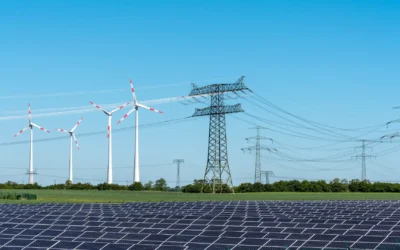• Traditionally, switchgear monitoring was carried out through offline monitoring and maintenance systems which was a tedious process.
• A significant increase in the temperature of the contacts of the switch is considered one of main causes of failure in an electrical power system.
• The bidirectional flow of electricity takes a toll on the grid equipment especially the switchgear which in turn requires improved maintenance strategies to avoid critical failures.
Traditionally, switchgear monitoring was carried out through offline monitoring and maintenance systems which was a tedious process that consumed time, required CBs (Circuit Breakers) to be removed, exposed contacts, led to misalignment issues while the lives of maintenance workers were also placed at a risk of arc flash. Additionally, in traditional monitoring of the switchgear there is possibility that increase in the interrupting time and insulation failure may go unchecked.
Switchgear Monitoring
Switchgears already had a crucial role to play in ensuring the reliability and maintaining the stability of a conventional electricity grid but with the penetration of decentralized generation significance of switchgear especially the HV switchgear has increased manifold. HV switchgear ensures the reliability and stability of power systems that operate at voltage levels greater than 42 kV. Key original equipment manufacturers including ABB, General Electric and Siemens are offering circuit breaker monitoring solutions which are shown in the figure below.

Figure 1: Circuit Breaker Monitoring Portfolio of Key OEMs (original equipment manufacturers).
Source: Power Technology Research
HV switchgears are usually monitored for their temperature, SF6 gas leakage and partial discharge monitoring:
Temperature monitoring systems for switchgear
A significant increase in the temperature of the contacts of the switch is considered one of main causes of failure in an electrical power system. It is a challenging task to monitor the temperature of switchgear components as majority of temperature related complications are created as a result of a strong magnetic field and high current passing through the electrical components that have shielding and insulation. Historically, in order to measure the switchgear temperature manual techniques were deployed that utilized infrared temperature sensors to measure temperature. This was an inexpensive solution which required an IR sensor directed at the electrical component which needed to be observed. This technique did not provide accurate readings as the electrical grid components that need to be observed are usually enclosed in an insulation boot within the switchgear. Hence, for temperature monitoring the market is moving towards fiber optical sensors that are installed in the switchgear. Optical fiber sensors are an expensive solution, but they provide reliable and real-time measurements.
SF6 gas monitoring
Any significant loss of SF6 gas from the switchgear has the potential to push the circuit breaker towards failure, in turn damaging other equipment in the system as well. SF6 leakage also has the potential to contribute significantly towards global warming. SF6 gas monitoring is carried out by utilities, industrial customers, and grid owners in order to carry out predictive maintenance of the switchgear that helps them avoid environmental penalties and forecast refilling needs of the switchgear.
Partial discharge monitoring
Breaker operations or mechanical vibrations result in the formation of free moving metallic particles that can generate strong electric fields that locally initiate partial discharges within the insulation. Repeated partial discharges within the insulation has the potential to produce a flash over which requires the switchgear to be placed out of operation for repair works. In order to avoid forced outages, partial discharge monitoring is carried out as an offline quality control test during planned outages or through online monitoring during regular operations.

Figure 2: Different Maintenance Strategies.
Source: Power Technology Research
Looking Ahead
As per the assessment of Power Technology Research, asset health monitoring has a very crucial role to play in the electrical grids especially with the widespread deployment of renewable generation and smart mobility. The bidirectional flow of electricity takes a toll on the grid equipment, especially on the switchgear which in turn requires improved maintenance strategies to avoid critical failures, for instance proactive and predictive maintenance.
Furthermore, the global asset health monitoring market is moving away from time-based maintenance to condition-based maintenance. Maintenance of switchgear after a fixed time interval and offline testing of the equipment is now deemed not only inadequate but unsafe as well because the switchgear is not subjected to constant but variable operating conditions.
High Voltage Switchgear Service Overview
The research presented in this article is from PTR's High Voltage Switchgear service. For information about this service please submit a request shown below.
Contact Sales:
Europe
+49-89-12250950
Americas
+1 408-604-0522
Japan
+81-80-7808-1378
GCC/Rest of APAC
+971-58-1602441
More about our:
High Voltage Switchgear Market Research
Recent Insights
Europe’s Switch to Sustainable Power: The Rise of Solid-Insulated Switchgear
As Europe intensifies its shift towards sustainable energy solutions, Solid Insulated Switchgear (SIS) is emerging as a key technology in the...
US Elections: Consequences of a Second Trump Presidency for Energy Sector
The US is making strides to move away from fossil fuels and eventually decarbonize the energy sector. The White House aims to achieve 80% renewable...
Sustainability Across Sectors: Highlights from GreenTech Festival 2024
Recently, I had the privilege to attend and present at the Greentech Festival, an excellent event in the realm of sustainability. This influential...


